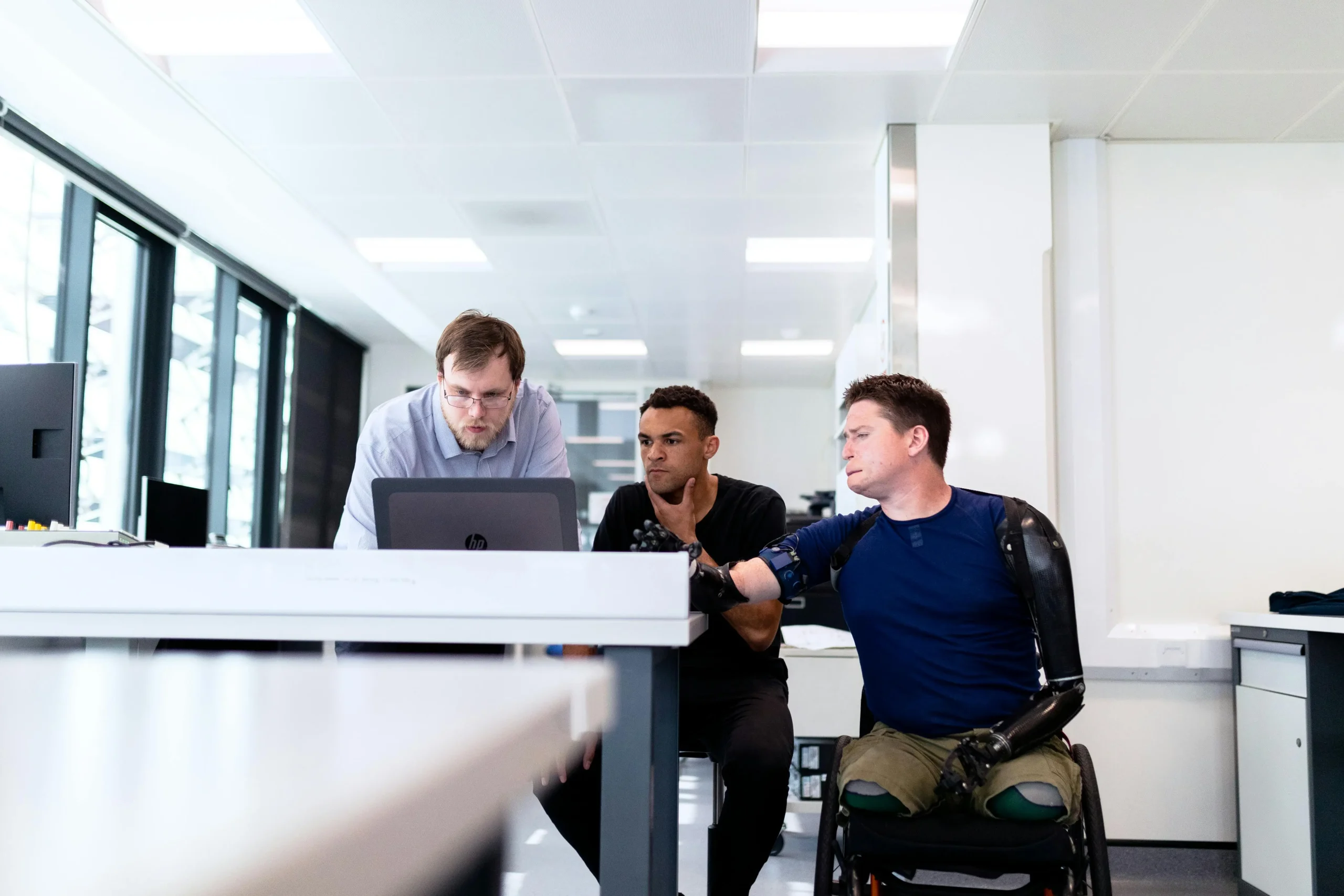n today’s rapidly evolving world, creating an accessible employment strategy is essential for organizations that want to build a truly inclusive workplace. But what does accessible employment actually entail? Simply put, it’s about breaking down barriers that may prevent talented individuals from fully participating and thriving within an organization. Accessible employment isn’t just a “nice-to-have” — it’s a business imperative that drives success through diversity, innovation, and resilience.
What Is Accessible Employment Strategy?
Accessible employment refers to the proactive efforts that employers make to ensure their workplace, policies, tools, and environments are fully inclusive. This often means enabling people of all abilities to work, interact, and contribute comfortably and equitably.
Why Accessible Employment Strategy Matters
An accessible employment strategy creates a level playing field, empowers employees, and fosters a diverse company culture. Not only does it make your organization more attractive to job seekers, but it also improves retention and engagement among current employees. In fact, companies with strong diversity and accessibility initiatives are often more adaptable and innovative.
Step 1: Conducting an Accessibility Audit
An accessibility audit is the first critical step in any accessible employment strategy. This audit allows organizations to evaluate their current accessibility gaps, both physical and digital.
Analyzing Physical Spaces for Accessibility
From entry ramps to restroom facilities, physical accessibility is fundamental. Are there accessible pathways, elevators, and designated spaces for people with disabilities?
Assessing Digital Accessibility
With more work happening remotely, digital accessibility has never been more important. Accessibility software and tools, such as screen readers, are essential for employees with vision impairments. Ensuring your website and digital resources are usable for everyone is crucial.
Step 2: Setting Clear Accessible Employment Strategy Goals
Once an audit is completed, it’s time to set realistic, measurable goals. Think about both short-term and long-term objectives that are achievable and aligned with your organization’s mission.
Defining Long-Term and Short-Term Goals
Short-term goals might include addressing immediate physical or software gaps, while long-term goals could involve creating a robust accessibility strategy across all departments.
Setting Measurable Accessibility KPIs
By setting clear KPIs for accessibility, you can track progress effectively. These KPIs may include increased employee satisfaction, the number of accessible resources provided, or overall recruitment and retention rates.
Step 3: Updating Recruitment Processes
The recruitment process often has hidden barriers that exclude potential talent. Revising your hiring process is essential for inclusive growth.
Creating Inclusive Job Descriptions
Avoid using biased language or vague requirements. Instead, focus on skills and qualifications that truly matter, and state that your organization is committed to accessibility and inclusion.
Removing Unconscious Bias in Recruitment
Tools like anonymous resume screening can help reduce unconscious bias, leading to a more diverse applicant pool.
Step 4: Building an Accessible Onboarding Process
An inclusive onboarding process sets the tone for new hires and ensures that all employees feel welcome from day one.
Preparing Managers for Diverse Team Integration
Train managers to be mindful of accessibility needs and to foster an environment where new employees feel comfortable asking for accommodations.
Tailoring Training Programs for Accessibility
Adapt training materials for accessibility. Ensure that audio, video, and text resources are available in multiple formats, such as captions, transcriptions, and large-print documents.
Step 5: Providing Assistive Technologies
Assistive technology is a cornerstone of accessible employment. Providing the right tools can empower employees and improve productivity.
Types of Assistive Technologies to Consider
Consider offering screen readers, speech recognition software, and ergonomic workstations to help individuals with specific needs.
Incorporating Software for Digital Accessibility
Invest in software that enhances digital accessibility, ensuring that all online resources, including shared documents and company portals, are user-friendly for everyone.
Step 6: Fostering an Inclusive Company Culture
A truly accessible employment strategy isn’t just about policies — it’s about building a culture of inclusion.
Encouraging Open Communication and Feedback
Invite employees to share feedback on how the workplace could be more inclusive. This communication can bring important insights into what’s working and what needs improvement.
Step 7: Updating Policies for Inclusivity
A comprehensive policy framework solidifies your commitment to accessible employment. Ensure policies align with industry standards and address specific needs.
Ensuring Equal Opportunity Policies Are Enforced
Include equal opportunity and anti-discrimination policies that clearly outline your organization’s stance on accessibility.
Flexible Work Policies for Accessibility
Remote and flexible work options allow employees with physical disabilities or health conditions to thrive without compromising productivity.
Step 8: Offering Continuous Training on Accessibility
Training shouldn’t be a one-time event. Regular accessibility training keeps everyone aware of best practices and evolving standards.
Training Managers and Leaders
Managers should lead by example in accessibility practices. Regular training sessions can keep accessibility top of mind.
Step 9: Implementing Accessible Employment Strategy Communication Methods
Communication is the lifeblood of any organization. Accessible communication ensures that everyone can participate meaningfully.
Accessibility in Meetings and Presentations
Make meetings accessible by offering options such as captioning, sign language interpreters, or transcripts.
Step 10: Regularly Reviewing and Improving Accessibility Measures
Accessibility isn’t static. Organizations should continually evaluate their accessibility measures to ensure ongoing effectiveness.
Gathering Feedback for Ongoing Improvements
Periodic surveys or feedback sessions can reveal whether current accessibility measures are effective or if additional adjustments are needed.
Conclusion: Achieving True Accessibility
Building an accessible employment strategy is not just an ethical choice but a strategic one. It enhances team morale, boosts engagement, and expands your talent pool. In the words of accessibility advocate Haben Girma, “When you design for accessibility, you help everyone.” An accessible workplace is a stronger, more resilient one, capable of tackling any challenge that comes its way.
FAQs on Accessible Employment Strategy
- What does accessible employment mean? Accessible employment is about creating an environment where all individuals can work comfortably, without physical or digital barriers.
- How can I make my hiring process more inclusive? Use bias-free language, ensure accessible application methods, and include a statement of commitment to accessibility.
- What are common accessibility goals? Typical goals include creating barrier-free physical spaces, offering assistive technologies, and building a culture of inclusion.
- How do assistive technologies support accessible employment? Tools like screen readers and speech-to-text software help people with disabilities perform tasks independently.
- What is an accessibility audit, and why is it essential? An audit identifies barriers in the workplace, guiding necessary improvements.
- How can companies foster a culture of inclusion? Host diversity training, invite feedback, and encourage open discussions about accessibility needs.
- What are some best practices for accessible communication? Use multiple formats for communication, such as transcripts, large print, or captioned videos.
- How often should accessibility measures be reviewed? Regularly — at least once a year, with periodic check-ins as needed.
- What benefits does an accessible employment strategy bring? A strategy that values accessibility improves engagement, diversity, and productivity across the board.
- What are the legal requirements for accessible employment? Requirements vary by country but generally involve making reasonable accommodations for individuals with disabilities.













